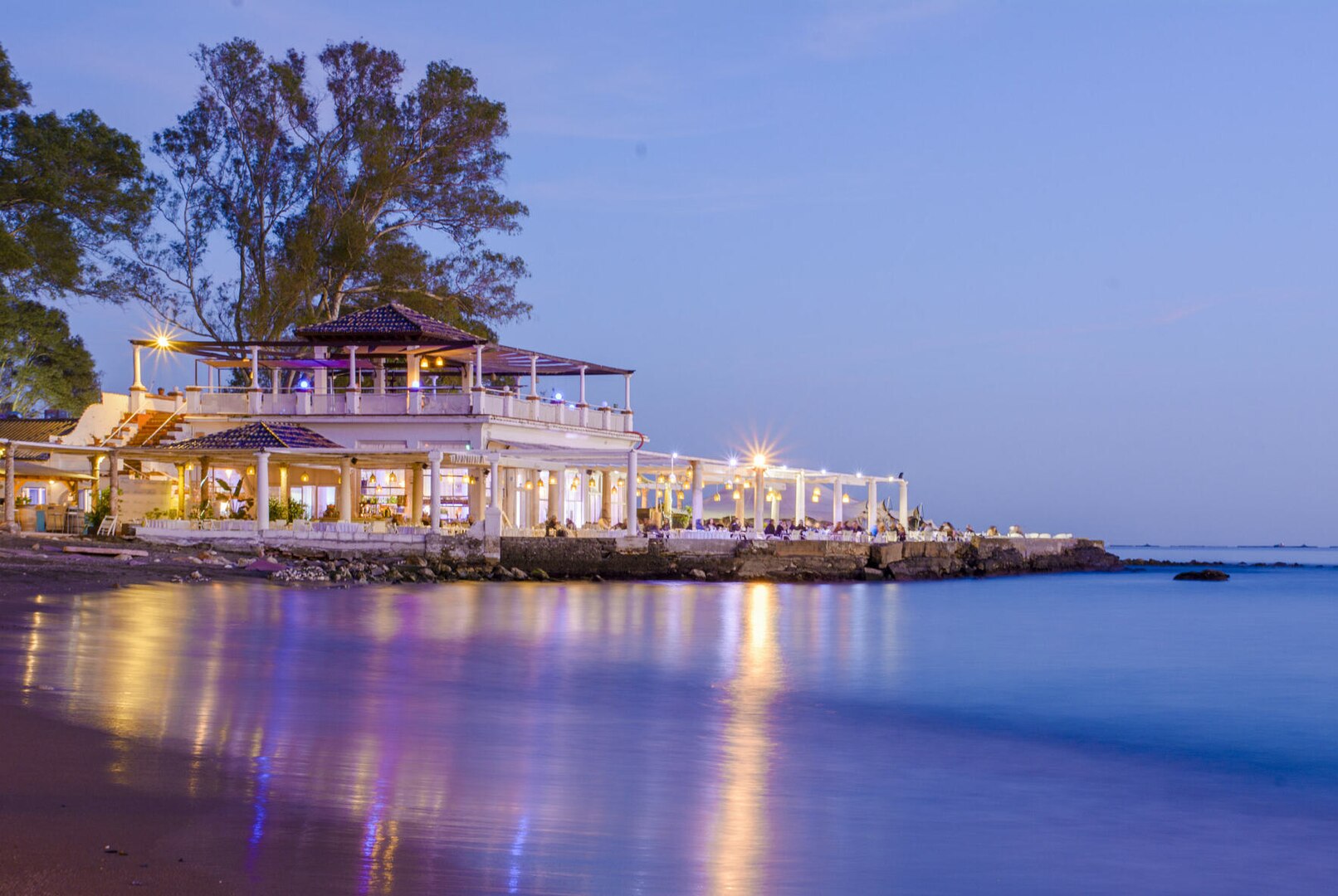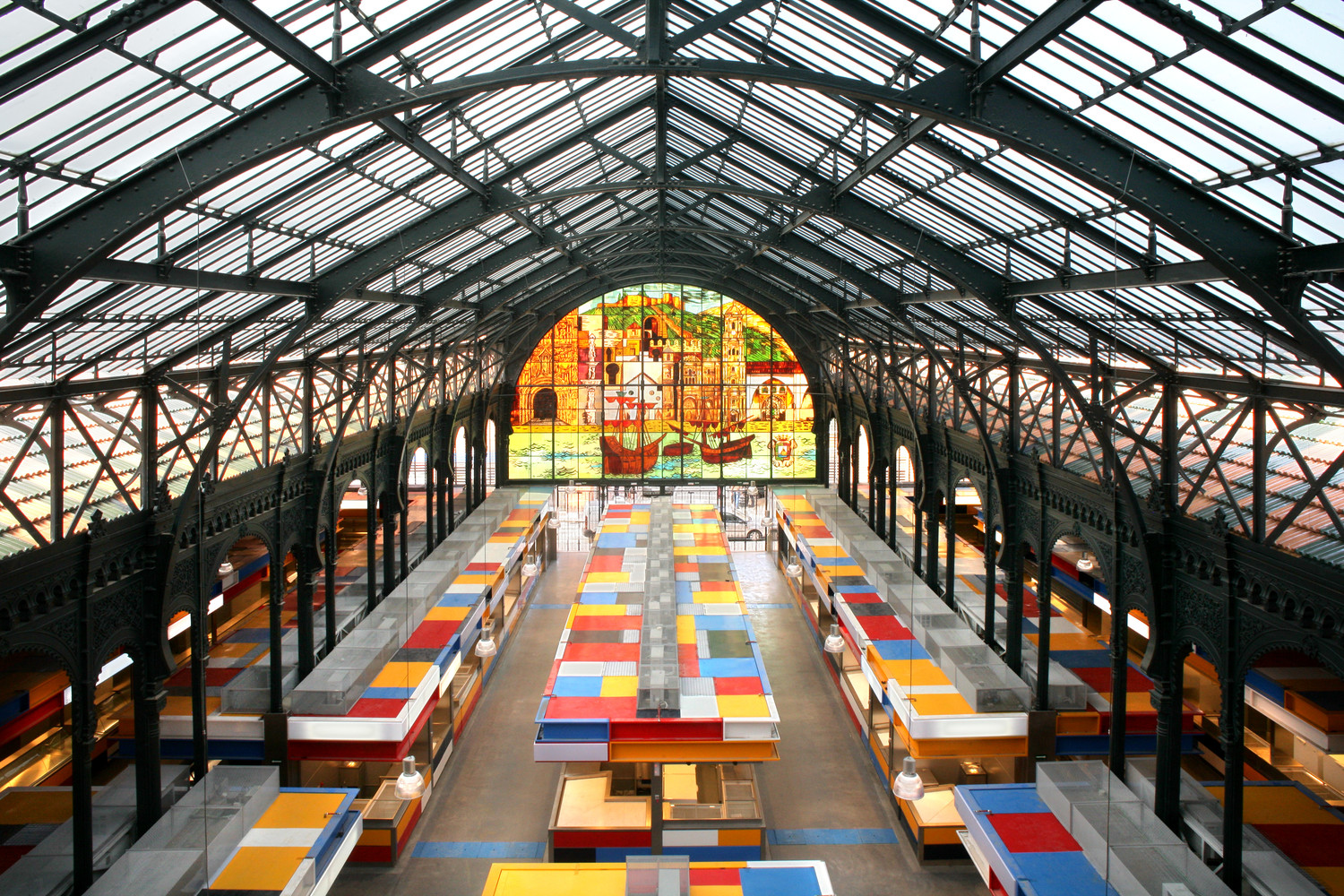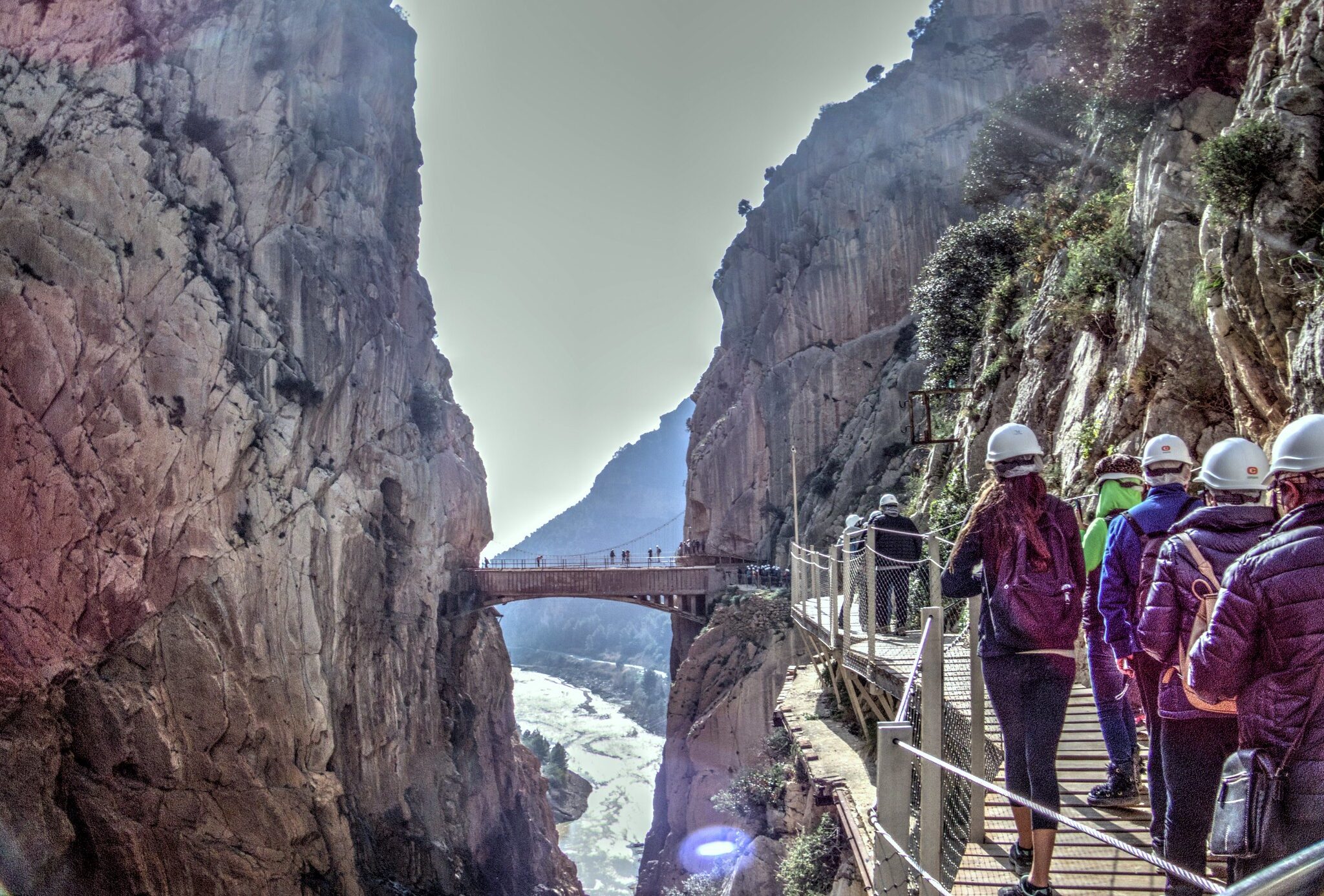Located in the Andalusia region of Spain, Malaga is one of the most attractive cities of the Mediterranean with its historical richness, stunning coastal views, and vibrant cultural fabric. This city, which stands out with its history dating back to ancient times, appeals to visitors of all ages with both its historical structures and modern art centers. Known also as the birthplace of the famous painter Pablo Picasso, Malaga is one of the important stops for art lovers.
The places to visit in Malaga are not limited to historical buildings only. The city’s beaches stretching along the coast, botanical gardens, delicious markets, and breathtaking viewpoints are also worth exploring. Whether you discover the spirit of the city by walking through its narrow streets or cool off in the warm waters of the Mediterranean, Malaga offers you an unforgettable travel experience. Below, we have listed 30 popular places that must be seen in this fascinating city.
🏰 Historical and Cultural Places
1. Alcazaba – This castle, dating back to the 11th century and one of the beautiful examples of Islamic architecture, is located in a dominant position overlooking the city.

Alcazaba is one of the most remarkable historical structures in Malaga and was built in the 11th century by the Hammudid dynasty. This castle, an impressive example of Andalusian Islamic architecture, was positioned on a high point of the city for defensive purposes. Equipped with spacious courtyards, stone staircases, arched passages, and elegant gardens, Alcazaba offers visitors a captivating experience both architecturally and aesthetically. At the same time, views of Malaga’s historic center and harbor can be observed from the castle walls, adding a special charm to the structure.
Restored many times throughout history, Alcazaba bears traces of both Muslim and Christian periods. Together with the adjacent Roman Theatre, it is an important heritage site that bears witness to the city’s layered history. The small museum and exhibitions located inside the Alcazaba provide information about daily life, architecture, and defense systems of the period. It is a must-see spot in the city for both history enthusiasts and photography lovers.
2. Gibralfaro Castle – Connected to the Alcazaba, this castle offers magnificent city views.
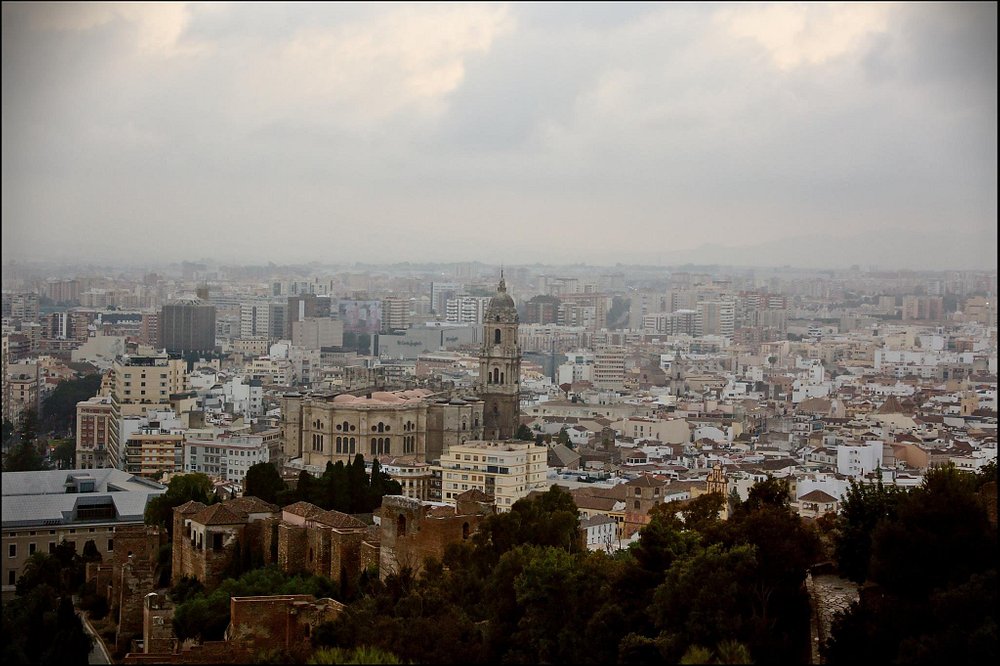
Gibralfaro Castle is located on one of the highest points of Malaga and is connected to the Alcazaba by walls. Built in the 14th century by Nasrid Sultan Yusuf I, this castle was used for military defense purposes. Thanks to its strategic location, it was possible to observe both the city and the Mediterranean coast, which made it play an important role in many sieges throughout history. Surrounded by thick walls, watchtowers, and inner courtyards, this structure showcases the durability of Islamic architecture.
Today, Gibralfaro Castle is one of the most ideal spots for those who want to enjoy a panoramic view of Malaga from above. Especially at sunset, the view stretching from the city center to the harbor is breathtaking. Inside the castle, there is a small military museum where visitors can learn about armor, maps, and weapons from the Andalusian period. Gibralfaro is one of the most impressive stops in a Malaga trip with both its historical and natural beauty.
3. Malaga Cathedral (La Manquita) – A cathedral built in Renaissance style, known for its unfinished south tower.

Malaga Cathedral rises in the city center as one of the most impressive structures of Spanish Renaissance architecture. Construction of the cathedral began in 1528, built on the site of a former mosque, and it was shaped by various architectural styles throughout its long construction period. However, due to the unfinished south tower, it is locally known as “La Manquita,” meaning “The One-Armed Lady.” This incompleteness has given the structure a unique character and made it one of Malaga’s symbols.
The interior of the cathedral draws attention with its high columns, impressive stained glass windows, and rich decorations. Its Baroque-style carved choir, magnificent main altar, and religious sculptures by Pedro de Mena offer visitors a spiritual and artistic experience. It is also possible to view the city from the cathedral’s bell tower. Malaga Cathedral is not only a place of worship but also a magnificent structure that bears witness to the history of art and architecture.
4. Roman Theatre (Teatro Romano) – This ancient theatre from the 1st century is located right next to the Alcazaba.

The Roman Theatre (Teatro Romano) is one of the oldest and most important archaeological remains in Malaga. Built in the 1st century AD during the reign of Roman Emperor Augustus, this theatre played a central role in the cultural life of “Malaca,” the Roman-era name for Malaga. Located right at the foot of the Alcazaba, the structure remained buried for centuries and was accidentally discovered in the 1950s. With its semicircular seating area (cavea), stage (scaena), and orchestra section, it reflects the characteristics of a classical Roman theatre.
Today, the theatre is open to visitors as an open-air museum with its restored sections. Thanks to the adjacent visitor center, it is possible to learn about the building’s history and the excavation process. With various cultural events and open-air performances, the theatre has come back to life. Its proximity to the Alcazaba offers visitors the opportunity to experience Roman and Islamic civilizations at a single point. The Roman Theatre is an essential stop for those who want to explore the historical fabric of Malaga.
5. Aduana Palace (Museo de Málaga) – A museum notable for its art and archaeology collections.

Aduana Palace is a magnificent building that today serves as the Museo de Málaga and is one of the city’s largest museums. Built in the 18th century as a customs house, the palace stands out with its classical Spanish architecture and is located very close to the Malaga port. Used for various purposes throughout history, the building was officially converted into a museum after its restoration in 2016 and has made a significant contribution to the city’s cultural life.
The Museo de Málaga is an impressive museum that brings together both fine arts and archaeology collections under one roof. The archaeology section introduces visitors to the region’s rich past from prehistoric times to the Middle Ages with artifacts from the Phoenician, Roman, and Islamic periods, while the art section houses prominent works of 19th-century Spanish painting. Exhibition halls filled with works by Pedro de Mena, Enrique Jaraba, and other local artists are worth seeing for anyone interested in art.
6. Plaza de la Merced – One of the city’s important squares, where Picasso’s birthplace is located.
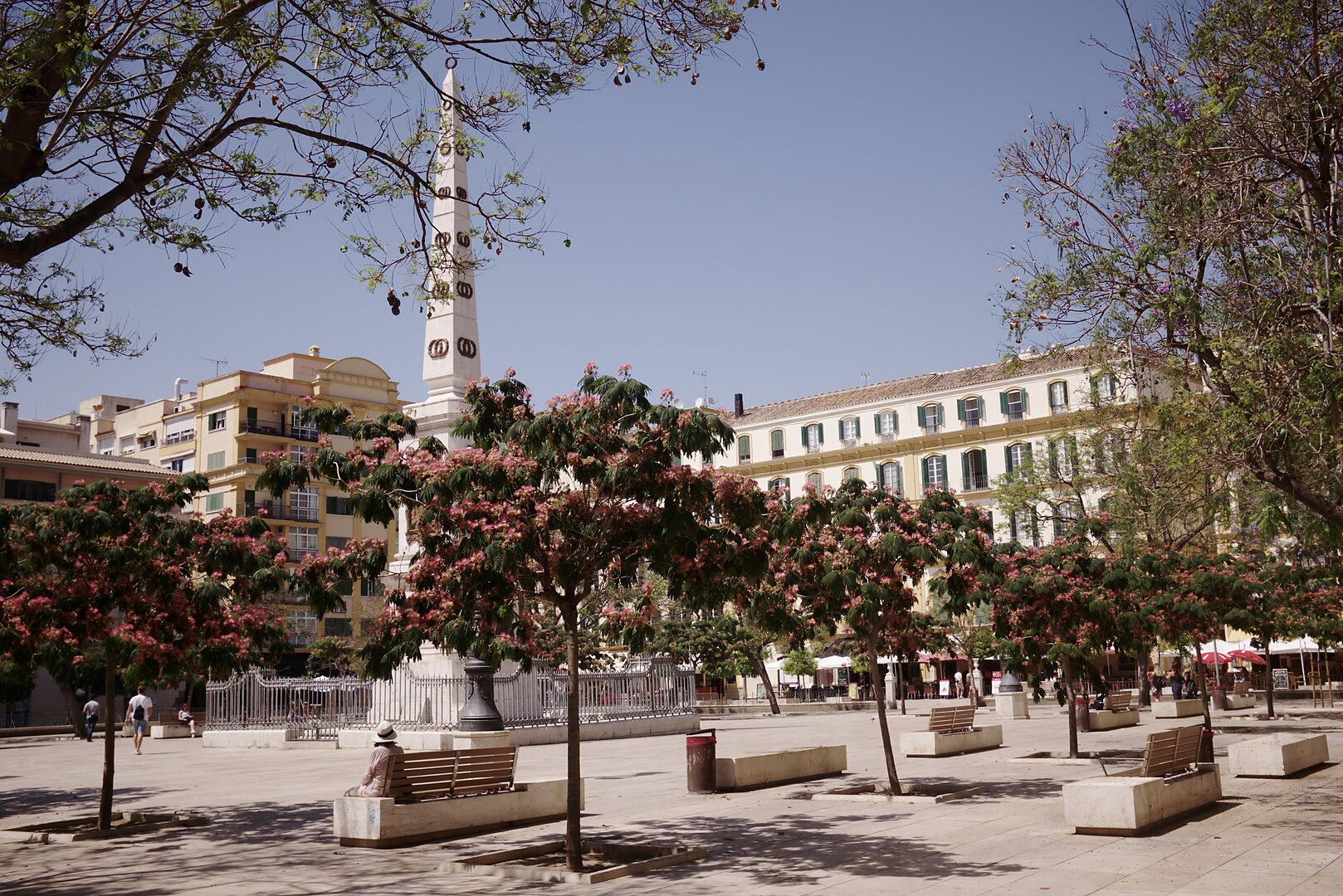
Plaza de la Merced is a square located in the historic center of Malaga and holds great importance both culturally and socially. With its spacious layout and lively atmosphere created by the surrounding cafes and restaurants, this square is also one of the main meeting points for locals. In the center of the square stands a 19th-century monument to freedom, and the area is surrounded by shaded trees and historic buildings. Especially in the evening hours, Plaza de la Merced becomes a vibrant environment, making it an ideal spot for both observing daily life and relaxing.
One of the elements that makes this square special is that it is home to the house where the famous painter Pablo Picasso was born. This house, converted into a museum under the name “Casa Natal de Picasso,” not only holds traces of the artist’s childhood but also displays his personal belongings and family archive, making it a significant cultural site. For this reason, the square carries historical and artistic value not only due to its architecture and vibrancy but also as the birthplace of one of Malaga’s most renowned figures.
7. Plaza de Toros de La Malagueta – A historic arena where bullfighting events are held.

Plaza de Toros de La Malagueta is one of the most well-known structures in Malaga and is an impressive bullfighting arena built in the 19th century. Opened in 1876, this structure stands out with its Neo-Mudéjar architectural style and is located in the coastal area of the city, very close to Malagueta Beach. With a capacity of approximately 14,000 spectators, the arena has served not only as a venue for bullfighting events but also for cultural activities and concerts.
The Bullfighting Museum (Museo Taurino Antonio Ordóñez), located within the arena, offers a rich archive for those interested in the history of this tradition. Costumes, posters, photographs, and historical documents related to bullfighting are exhibited here. During the “Feria de Agosto” festival held every August, La Malagueta becomes one of the liveliest and most colorful spots in the city. Due to both its architectural beauty and its symbolic representation of Spanish culture, Plaza de Toros is a must-see place for visitors to Malaga.
8. Calle Marqués de Larios – The city’s most famous street, ideal for shopping and walking.
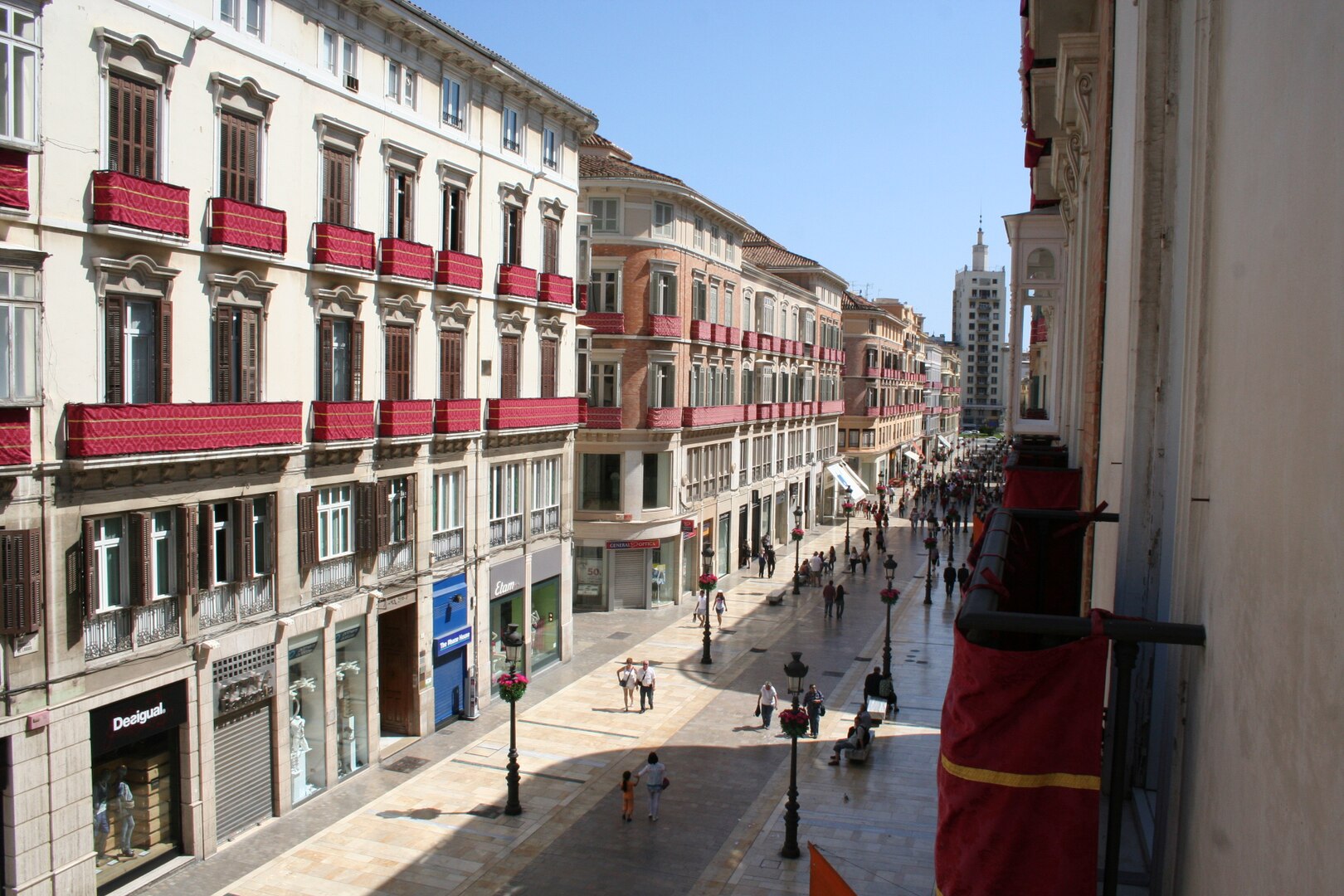
Calle Marqués de Larios is a pedestrian street located in the heart of Malaga and is considered the city’s most elegant and prestigious avenue. Built at the end of the 19th century, this street was designed wide and straight with the advanced engineering approach of its time, providing both an aesthetic and functional urban layout. Its marble-paved ground, elegant buildings, and palm-lined structure make it highly popular both during the day and at night. Especially on special occasions and festivals, the street transforms into an open-air stage with lights and decorations.
Calle Larios is a true paradise for shopping enthusiasts. From luxury boutiques to local shops, from cafes to patisseries, many venues line this street. As the center of the city’s social life, it also hosts numerous street performers, musical acts, and cultural events. It is a street that everyone visiting Malaga walks at least once, not only as a shopping destination but also as an ideal spot to feel the rhythm of the city.
9. Reding Fountain (Fuente de Reding) – A historic fountain built in 1675.

Reding Fountain (Fuente de Reding) is an elegant and meaningful structure among Malaga’s historical heritage. Built in 1675 by the order of the then-mayor Pedro de Reding, this fountain was designed both as a water source for the city and as a public structure reflecting the architectural aesthetics of the period. With its Baroque-style decorations, carved stone details, and reliefs, the fountain highlights the importance of Malaga’s water infrastructure at the time.
During the 18th and 19th centuries, the fountain served as an important stop for both locals and travelers to rest and meet their water needs. Located along one of the city’s historical walking routes, Reding Fountain still attracts attention today in its preserved state. This modest yet impressive structure that recalls Malaga’s past is a must-see spot for history enthusiasts and those interested in traditional urban details.
10. El Pimpi – A traditional tapas bar frequented by celebrities.

El Pimpi is one of the most iconic and beloved venues in Malaga, located in the city center near the Alcazaba and the Roman Theatre. This historic tapas bar, reflecting the traditional Andalusian atmosphere, operates within an old mansion and offers a nostalgic ambiance with its stone walls and wooden details. Opened in 1971, El Pimpi takes its name from the “pimpis” who carried goods at the Malaga port and has retained its character as a unique place representing local culture.
One of the features that make El Pimpi special is that it is a popular spot for many Spanish and international celebrities. Visited by well-known figures such as Antonio Banderas and Penélope Cruz, the venue resembles a gallery with signed barrels displayed on its walls. Its rich tapas menu, selection of local wines, and dining experience accompanied by live flamenco melodies make El Pimpi not just a restaurant, but a living part of Malaga’s cultural heritage.
🖼️ Museums
11. Picasso Museum – A museum displaying the works of Pablo Picasso.

The Picasso Museum (Museo Picasso Málaga) is one of the most important cultural landmarks in Malaga and is dedicated to the world-renowned artist Pablo Picasso. Opened in 2003, the museum was established with over 200 works donated by the artist’s family and aims to honor his legacy in the city where he was born. Located inside the historic 16th-century Buenavista Palace, the museum offers a unique experience for art lovers through both its architecture and its collection.
The museum exhibits paintings, ceramic works, sculptures, and drawings from various periods of Picasso’s career. Visitors have the opportunity to closely follow the artist’s transitions between movements such as Cubism, Classicism, and Surrealism, as well as his creative evolution. Additionally, the museum hosts temporary exhibitions, art workshops, and cultural events. Situated in Malaga’s historic center, this museum is a must-visit not only for Picasso enthusiasts but also for anyone interested in art and Spanish culture.
12. Picasso’s Birthplace (Casa Natal de Picasso) – The house where the artist was born, now serving as a museum.
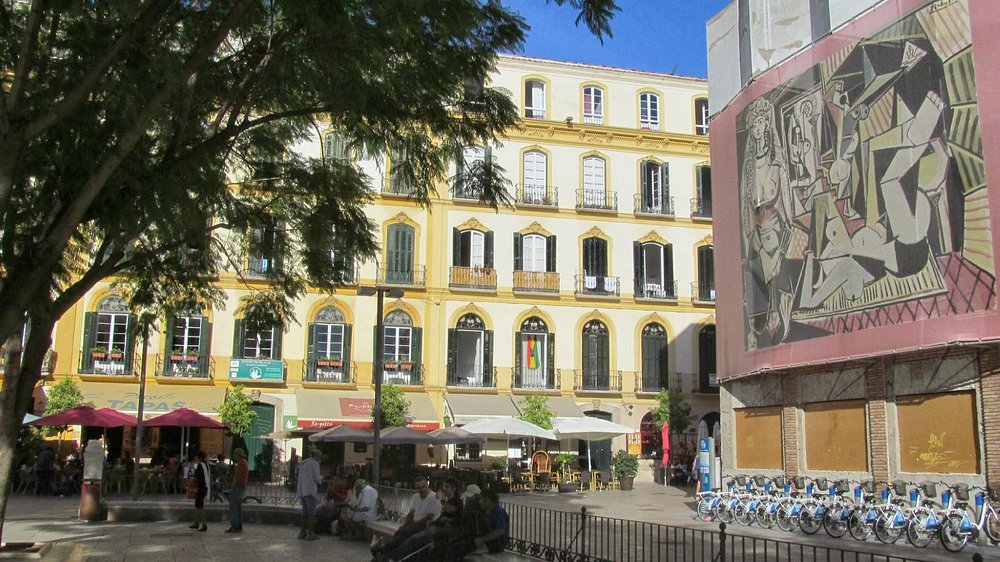
Museo Casa Natal de Picasso is located in the house where Pablo Picasso was born in 1881, situated in Plaza de la Merced in the historic center of Malaga. This museum offers visitors an in-depth look into Picasso’s early life by displaying items, photographs, and documents related to the artist’s childhood and family. In addition to works by Picasso in various techniques such as ceramics, engravings, and illustrations, the collection also includes pieces by artists like Miró, Bacon, Ernst, and Tàpies.
The museum is open every day of the week from 09:30 to 20:00. Admission fees are €3 for the general exhibition, €3 for temporary exhibitions, and €4 for a combined ticket covering both. Discounted rates are available for students, visitors over 65, and large families. The museum offers guided tours, workshops, and cultural events, providing visitors with the opportunity to gain a deeper understanding of Picasso’s life and works.
13. Centre Pompidou Málaga – A colorful cube-shaped building exhibiting modern art.

Centre Pompidou Málaga is an impressive museum located in the city’s port area, showcasing prominent examples of modern art. Designed by French artist Daniel Buren, the colorful glass cube structure known as “El Cubo” forms the museum’s entrance and adds a modern touch to the city’s skyline.
Opened in 2015, the museum is the first overseas branch of the Centre Pompidou Paris and houses important works of 20th and 21st-century modern art. Visitors can see pieces by artists such as Pablo Picasso, Frida Kahlo, Francis Bacon, and Joan Miró. The museum also regularly hosts temporary exhibitions, workshops, and cultural events. In 2025, it celebrated its 10th anniversary with major events like a retrospective exhibition of Vassily Kandinsky.
Centre Pompidou Málaga offers visitors a unique experience not only through its art collections but also through its architecture. With its location close to the city center, it is a must-visit modern art center for anyone coming to Malaga.
14. Carmen Thyssen Museum – A museum focused on 19th-century Spanish paintings.

The Carmen Thyssen Museum (Museo Carmen Thyssen Málaga) is a major art museum located in the historic center of Malaga, housed in the 16th-century Villalón Palace, and focuses on 19th-century Spanish painting. Opened in 2011, the museum is based on the private collection of Baroness Carmen Cervera (Carmen Thyssen-Bornemisza). By highlighting works by artists from the Andalusia region in particular, the museum provides a comprehensive view of Spanish painting from this period.
The museum’s permanent collection includes works by artists such as Francisco de Zurbarán, Joaquín Sorolla, Julio Romero de Torres, Ignacio Zuloaga, and Marià Fortuny. The collection spans a wide range—from romantic landscapes to naturalist scenes, costume paintings, and fin-de-siècle art. The museum also regularly hosts temporary exhibitions; for example, the exhibition “Desnudos. Cuerpos normativos e insurrectos en el arte español (1870–1970),” focusing on the representation of nudity in Spanish art, will run until 2025.
Visiting hours are from Tuesday to Sunday, 10:00 AM to 8:00 PM; the museum is closed on Mondays. General admission is €10, and discounted tickets are €6. The museum is wheelchair accessible and offers guided tours, workshops, and cultural events for visitors.
The Carmen Thyssen Museum is a must-see for visitors looking to explore Malaga’s artistic and cultural richness.
15. Automobile and Fashion Museum (Museo Automovilístico y de la Moda) – Notable for its collections of classic cars and fashion.

The Museo Automovilístico y de la Moda is one of Malaga’s most unique museums, offering visitors a distinctive experience by combining collections of classic automobiles with haute couture fashion. Located in the former Tabacalera tobacco factory, this museum spans 6,000 square meters and displays over 90 classic vehicles dating from 1898 to the present day. Rare models from brands such as Hispano Suiza, Bugatti, Rolls-Royce, Ferrari, and Jaguar are exhibited across 13 themed halls, which include sections like Belle Époque, Art Deco, British tradition, and alternative energy vehicles.
The fashion collection includes over 200 haute couture pieces from renowned brands such as Chanel, Dior, Givenchy, Balmain, and Prada. Displayed alongside the automobiles, these garments highlight the historical and artistic evolution of both the automotive and fashion industries. Additionally, every Sunday at 12:30 PM, the museum hosts a “Start the Engines” event, where some of the vehicles are started to provide an interactive experience for visitors.
Visitor Information:
- Address: Avenida Sor Teresa Prat, 15, 29003 Málaga
- Visiting Hours: Daily from 10:00 AM to 2:30 PM and 4:00 PM to 7:00 PM
Admission Fees:
- General: €12
- Over 65: €10
- Reduced: €8 (students, teachers, unemployed, large families, people with disabilities and their companions)
- Free for children aged 0–5
The museum is wheelchair accessible and offers guided tours, workshops, and various events. In 2025, it hosted an event titled “Street Style, Streetwear. The Fashion Revolution,” which explored current fashion trends and the cultural impact of streetwear.
16. Museum of Glass and Crystal (Museo del Vidrio y Cristal) – Exhibits that shed light on the history of glass art.

The Museo del Vidrio y Cristal de Málaga is a private museum located in an elegant 18th-century mansion in the city’s historic San Felipe Neri neighborhood, dedicated to shedding light on the history of glass art. Opened in 2009, the museum is based on the personal collection of historian and restorer Gonzalo Fernández-Prieto. It offers visitors a rich experience by exhibiting over 3,000 glass and crystal pieces, as well as period furniture, paintings, and decorative objects that reflect the spirit of their time.
The collection spans a wide range—from Phoenician, Roman, and Medieval glass artifacts to 16th- and 17th-century Venetian and Catalan glass. Each exhibition room is furnished with pieces that reflect the atmosphere of the corresponding period. This allows visitors not only to witness the evolution of glass art but also to observe the lifestyles of different eras.
The museum is open for guided tours from Tuesday to Sunday, 11:00 AM to 7:00 PM. Tours are offered in Spanish, English, French, and Italian. Admission is €7 for general visitors and €5 for discounted tickets (for seniors over 65, students, children aged 7–12, and groups). Entry is free for children under 6.
For those interested in glass art, the Museo del Vidrio y Cristal de Málaga offers a rich experience both aesthetically and historically.
17. Flamenco Alegría – A venue where you can watch flamenco performances.

Flamenco Alegría is a well-known venue located in Malaga’s La Malagueta district at Calle Vélez Málaga 6, offering authentic flamenco performances. It is just a 15-minute walk from the city center and Malagueta Beach. The venue combines flamenco dance, singing, and guitar performances to provide visitors with an unforgettable experience.
Shows are held daily, last about 60 minutes, and typically feature four to five artists. The performances blend traditional flamenco styles with modern interpretations, offering a rich experience for the audience. With a capacity of 100 people, the venue provides an intimate atmosphere and is accessible for people with disabilities.
Flamenco Alegría is not just a performance venue but also offers a gastronomic experience. Its restaurant serves dishes from traditional Andalusian cuisine. Additionally, an interactive event called “Introduction to Flamenco” is held, offering participants the chance to learn and experience the history, styles, and rhythms of flamenco.
Visitor Information:
- Address: Calle Vélez Málaga, 6, 29016 Málaga, Spain
- Show Times: Daily at 16:00, 18:00, 20:00, and 22:30
- Ticket Prices: Starting from approximately €28
- Reservation: Advance booking is recommended
Flamenco Alegría is an ideal venue for those who want to experience flamenco up close and explore Andalusian culture.
18. CAC Málaga (Contemporary Art Center) – A center exhibiting modern and contemporary artworks.

CAC Málaga (Centro de Arte Contemporáneo de Málaga) opened in 2003 and quickly became one of Spain’s leading contemporary art centers. Located in a former wholesale market building, the center spans 6,000 square meters and features spacious exhibition halls. The museum showcases contemporary artworks from the late 20th century to the present.
CAC Málaga has hosted works by international artists such as Louise Bourgeois, Olafur Eliasson, Damien Hirst, Miquel Barceló, and Santiago Sierra. It has a rich collection that includes sculptures, paintings, photographs, installations, and video art across various disciplines.
The museum offers free admission to visitors. However, it has been temporarily closed since September 8, 2024, due to an extensive renovation process. The renovations are expected to be completed in early 2026, and the museum will reopen under the new name MuCAC (Museo y Centro de Arte Contemporáneo de Málaga). During this period, a temporary exhibition space has been set up in the La Coracha area, which opened its doors to visitors in April 2025 with the exhibition “Ayer, Colección 1940–90.”
CAC Málaga offers a comprehensive cultural experience not only through its exhibitions but also through workshops, seminars, and educational programs. It is located on Calle Alemania in Malaga’s Soho district, close to the city center and other major cultural venues.
🌿 Nature and Scenic Spots
19. Malagueta Beach – A popular beach located near the city center.
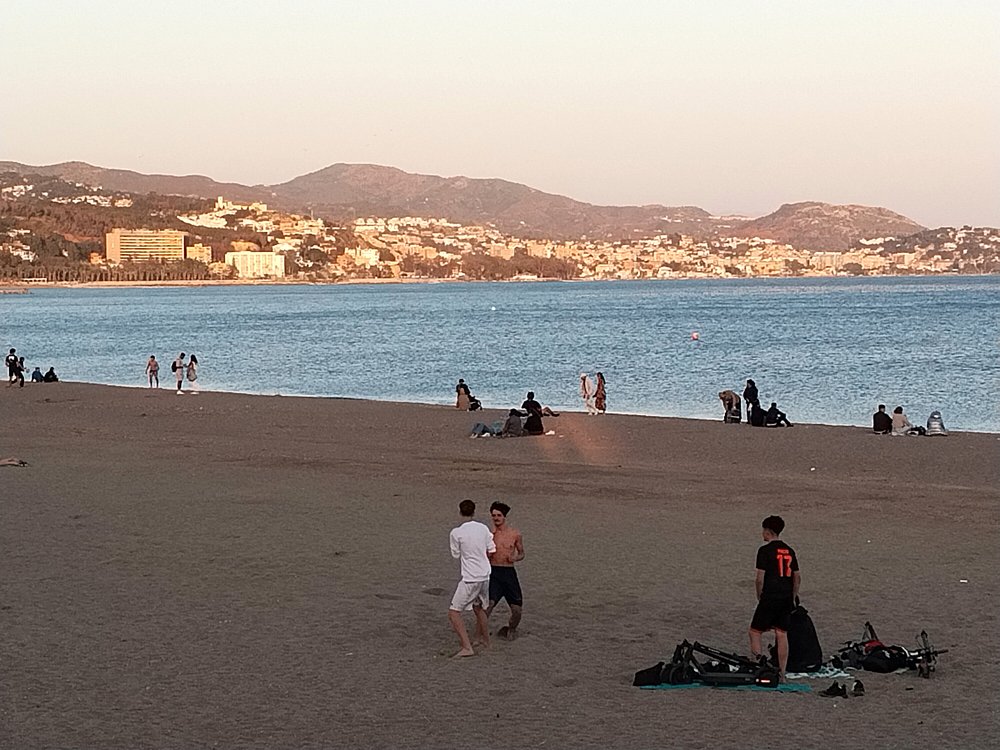
Malagueta Beach (Playa de la Malagueta) is the city’s most popular and easily accessible beach, located just a 10–15 minute walk from Malaga’s city center. Stretching 1,200 meters in length and averaging 45 meters in width, this beach is known for its dark sand and palm tree-lined shoreline. Malagueta is a year-round spot favored by both locals and tourists for relaxation and leisure.
The beach offers facilities such as showers, toilets, children’s play areas, sports courts, lifeguard services, and daily cleaning. Sunbed and umbrella rentals are also available. Along the coast, beach bars known as “chiringuitos” serve local Malaga specialties, such as espeto de sardinas (sardines grilled on skewers). During the summer, open-air cinema screenings and music festivals are held on the beach. In 2025, Malagueta Beach was awarded the Blue Flag for meeting criteria in water quality, safety, environmental management, and accessibility.
Malagueta Beach is an ideal destination for those looking to relax and have fun. With its proximity to the city center and wide range of amenities, it is a must-visit spot during your stay in Malaga.
20. Pedregalejo – A former fishing village known for its seafood restaurants.





